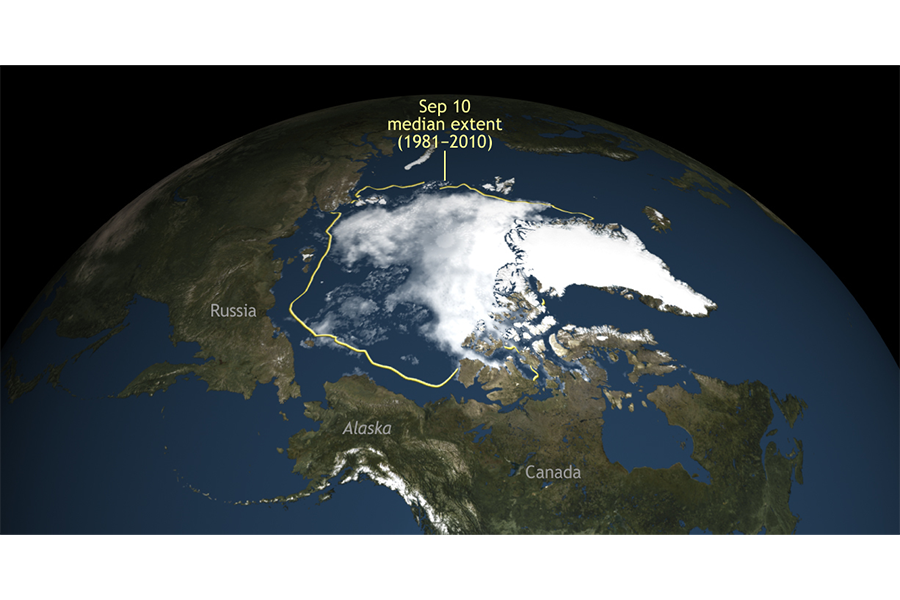Arctic sea ice hits second-lowest level on record
Loading...
The sea ice floating on the Arctic Ocean this summer melted to the second lowest level on record. The record for lowest level for was set in 2012, and, in all, the last decade has brought the lowest summer Arctic ice levels ever observed.
Mark Serreze, director of the National Snow and Ice Data Center in Colorado, which monitors ice levels by satellite, calls new patterns for ice activity in the Arctic a "new regime."
"We've always known that the Arctic is going to be the early warning system for climate change," said Dr. Serreze. "What we've seen this year is reinforcing that."
The snow and ice data center reported Thursday that sea ice reached its summer low point on September 10 when it covered 1.6 million square miles, or 3,800 square miles less than the ice cover in 2007. In 2012, sea ice at its lowest point in September covered 1.31 million square miles of Arctic.
While 2016 levels were technically lower than the levels in 2007, the two years were so close that scientists consider them to be tied. Regardless, the overall downward trend is troubling, say scientists. As NASA points out, September Arctic sea ice is declining at a rate of 13.4 percent per decade, relative to the 1981 to 2010 average.
"The trend is clear and ominous," National Center for Atmospheric Research senior scientist Kevin Trenberth said in an email to the Associated Press.
Serreze predicts that, as temperatures continue to rise, ice in the Earth’s polar north will melt completely in summer of 2030. The current year is expected to be the warmest on record, as The Washington Post point out.
Scientists suspect the effects will reach far beyond the Arctic. One recent hypothesis proposes that Arctic ice melt could change the jet stream, which would affect the weather further south, especially in winter.
"What happens in the Arctic doesn't stay in the Arctic," Pennsylvania State University climate scientist Michael Mann said. "It looks increasingly likely that the dramatic decrease in Arctic sea ice is impacting weather in mid-latitudes and may be at least partly responsible for the more dramatic, persistent and damaging weather anomalies we've seen so many of in recent years."
The snow and ice data center warns that this week’s melt report is preliminary – it could get worse, says the center. "Changing winds or late-season melt could still reduce the Arctic ice extent, as happened in 2005 and 2010." The center will release a full ice-melt report in October, including insight into the peculiar ice activity on the other end of the Earth, in the Antarctic region, where scientists have observed winter sea ice growth, according to the data center.
Material from the Associated Press was used in this report.








